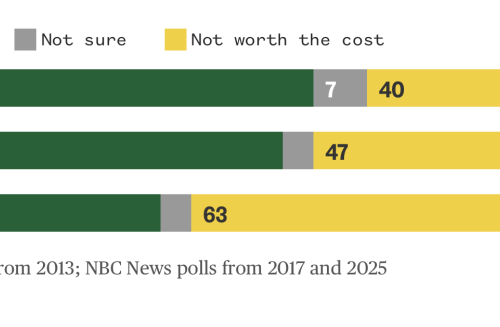
When it comes to exterior finishes for homes, Dryvit and stucco are two popular options. While they may look similar, these materials have distinct characteristics that set them apart. Some homeowners prefer a more traditional brick and stucco for their walls and exteriors, and others prefer materials that insulate, like Dryvit clapping.
Differences Between Stucco and Dryvit
Many stucco systems are available to homeowners, so you may have come across something called Dryvit when deciding which system is best for you.
Traditional stucco is a cement-based mixture used in construction for centuries. It’s typically applied in three coats over wire mesh or lath. Alternatively, Dryvit stucco is a brand name of a stucco manufacturer rather than a specific stucco system. Dryvit sells several stucco systems, including three-coat systems, EIFS systems, decorative systems, and more.

Dryvit is a synthetic stucco system that combines insulation and a textured finish in one product. These systems usually have many layers, including an insulation board, a base coat with mesh to strengthen it, and a finish coat that looks like traditional stucco.
What Makes Dryvit Unique?
Dryvit stands out from traditional stucco in several ways, offering unique benefits for homeowners and builders alike. Its distinctive features make it a popular choice for both residential and commercial applications. These features include Dryvit’s insulation properties and versatility in design, weight, and installation.
Insulation Properties
One of the main advantages of Dryvit is its superior insulation properties. The system incorporates a layer of foam insulation, which helps improve a building’s energy efficiency. Improving a building’s energy efficiency can lead to lower heating and cooling costs, making Dryvit an attractive option for those looking to reduce their energy bills.
Versatility in Design
Dryvit offers a wide range of textures and colors, allowing for greater design flexibility compared to traditional stucco. Homeowners can choose from various finishes that mimic not only stucco but also brick, stone, and other materials. This versatility makes it easier to achieve a desired aesthetic without the weight and cost associated with some traditional materials.
Weight and Installation
Dryvit systems are generally lighter than traditional stucco. The lighter weight can reduce structural requirements and lower installation costs. Additionally, you can often install Dryvit more quickly than conventional stucco, which may be advantageous for time-sensitive projects.
Types of Stucco Systems Offered by Dryvit
Dryvit offers a range of stucco systems designed to meet various architectural and performance requirements. Each system has its unique features and benefits, catering to different project needs and preferences.
1. Continuous Insulation System
Dryvit’s continuous insulation systems use foam insulation on the exterior surface of buildings, improving overall insulation and air-tightness. These systems are particularly effective in improving energy efficiency and reducing thermal bridging in structures.
2. Stucco System
The stucco systems offered by Dryvit are similar to traditional three-coat stucco applications. They incorporate metal lath and are suitable for both wood and masonry substrates. Some variations of these systems include improved water and air barriers for improved protection against the elements.
3. Direct Applied System
For simpler applications, Dryvit offers direct-applied systems that don’t include a continuous insulating barrier. These systems can be applied directly over masonry, wood, and Insulated Concrete Form (ICF) substrates, providing a straightforward solution for certain project types.
4. Panelization System
Dryvit’s panelization systems consist of pre-fabricated panels that include insulation, mesh, base coat, and finish coat. While Dryvit is used in larger commercial applications, it can also be suitable for certain residential projects that need rapid installation.
5. NewBrick System
The NewBrick system is Dryvit’s innovative solution for achieving the look of traditional brick without the associated drawbacks. This system focuses on the finish coat to replicate the appearance of brick while offering benefits such as reduced weight, lower cost, and easier installation compared to conventional brick.
6. ReVyvit System
The ReVyvit system offers various options to address common issues in aging stucco buildings. This system can improve the texture, color, energy efficiency, and overall performance of existing stucco facades.
Advantages of Dryvit Stucco
Dryvit stucco systems offer several advantages that make them an attractive option for many homeowners and builders. Understanding these benefits can help you make an informed decision about exterior finishes.
One of the primary advantages of Dryvit systems is their excellent insulation properties. The continuous insulation layer helps reduce heat transfer, leading to significant energy savings over time.
Today’s Homeowner Tips
Dryvit is frequently used on houses with ICF exteriors because the two work well together. Since ICF blocks are highly susceptible to degradation and UV radiation, Dryvit acts as a protection.
Dryvit systems are highly durable and weather-resistant. The acrylic-based mixtures used in Dryvit finishes, such as Sandpebble and Sandblast, offer strong resistance to mildew and other environmental factors. This durability can translate to lower maintenance costs and longer-lasting exteriors.
With a wide range of textures and colors available, Dryvit systems offer great design flexibility. Homeowners can get the look of different materials, like traditional stucco, brick, and stone, without the weight or hard work of putting them in. This versatility allows for creative architectural designs and easy customization.
Dryvit systems incorporate weather barriers and have designs that allow for proper moisture drainage. This feature helps protect the underlying structure from water damage and potential mold growth.
Dryvit Prices
Dryvit pricing is calculated on a per-square-foot basis plus the cost of materials.
The price of Dryvit itself depends on how much you need to cover your walls and ceiling, plus your zip code. The more square feet your project requires, the more expensive it will be.
For example, if you want to cover 1,500 square feet, Dryvit will cost $4 to $6 per square foot. The total cost for this job would be $9,000 (1,500 x 6).
Value Considerations
When evaluating the cost of Dryvit, it’s important to consider the long-term value. Factors such as energy savings, reduced maintenance needs, and durability can offset the initial investment over time. Also, consider how it looks and how it might make your property more valuable when comparing Dryvit to other exterior finishing options.
Dryvity Maintenance Tips
Proper maintenance is key to ensuring the longevity and performance of Dryvit systems. While Dryvit is known for its low-maintenance requirements, regular care can help maintain its appearance and functionality for years to come.
Inspect the Dryvit at least once a year, looking for signs of damage like cracks or chips. Periodically clean your home’s exterior with a mild detergent and low-pressure water spray. If you use a sprinkler system, make sure they aren’t directing water at the side of your house to prevent unnecessary exposure to water.
Address damage quickly if you see any. You can repair small cracks or chips with specialized Dryvit patching compounds. For more significant damage or if unsure about the repair process, it’s best to consult with a professional experienced in Dryvit systems.
While Dryvit finishes are long-lasting, recoating may be necessary after many years of exposure to the elements. This process can refresh the appearance and provide additional protection to the system.
Today’s Homeowner Tips
To ensure the sealant has not deteriorated or broken, inspect the locations where panels meet windows and doors. Any cracked or worn areas may be letting moisture into the house, raising the possibility of mold growth and other issues.
Final Thoughts About Dryvit vs Stucco
When it comes to choosing between Dryvit and traditional stucco, homeowners have much to consider. Both options offer unique benefits and can provide attractive, durable exteriors for residential properties. Dryvit’s energy efficiency, design flexibility, and potential for lower maintenance make it an appealing choice for many modern homeowners.






Leave a Reply